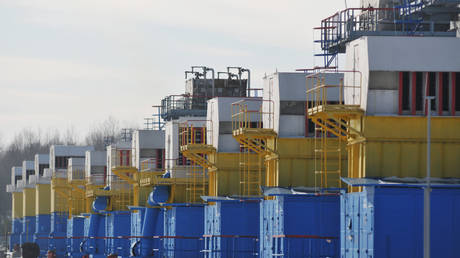
Ukraine offers to store EU gas
Kiev says foreign traders can use half of the country’s empty storage
Ukraine is offering EU traders the possibility to rent up to half of the country’s natural gas storage for the coming winter, Prime Minister Denis Shmigal told national television on Wednesday.
Ukraine has a total gas storage volume of 31 billion cubic meters (bcm), which is the largest in Europe and is well above its domestic needs. According to Shmigal, Ukraine could make up to 15 bcm of storage available to European traders.
In April, the CEO of Ukrainian state energy company Naftogaz, Aleksey Chernyshov, said during a trip to Brussels that Kiev could offer the bloc its large capacities to serve as “an energy backup.”
“I can guarantee that I can rent this empty space to European countries that can store gas in Ukraine. And when they need it, they can get it back to Europe,” Chernyshov stated.
In early October, the CEO announced that foreign traders had increased volumes of natural gas stored in Ukraine to 2.2 bcm, from 1.8 bcm in mid-September.
“Over the past day alone, we have received 14 applications from non-residents to pump gas into… Ukrainian gas storage facilities,” Chernyshov said in a Facebook post.
Read more
EU wants to store its gas in Ukraine – Bloomberg
European gas traders and energy groups have begun to stock gas at storage facilities in Ukraine this year, defying conflict-related risks and taking advantage of lower costs and available capacity, company executives told Reuters in August.
The chairman of the Czech energy group EP Commodities, Miroslav Hasko, confirmed to the news agency that his company “transports natural gas to Ukraine and uses Ukrainian gas storage facilities.”
“We consider gas storage in Ukraine as one of the interesting business opportunities that we are currently considering,” he added.
Slovakia’s state-owned SPP, which supplies most of the Slovak market, in part with Russian gas, also said it was looking at the possibility of using Ukrainian storage.
Natural gas can be widely bought and sent to Ukraine via reverse flows in pipelines from Hungary, Slovakia, and Poland.
For more stories on economy & finance visit RT’s business section

